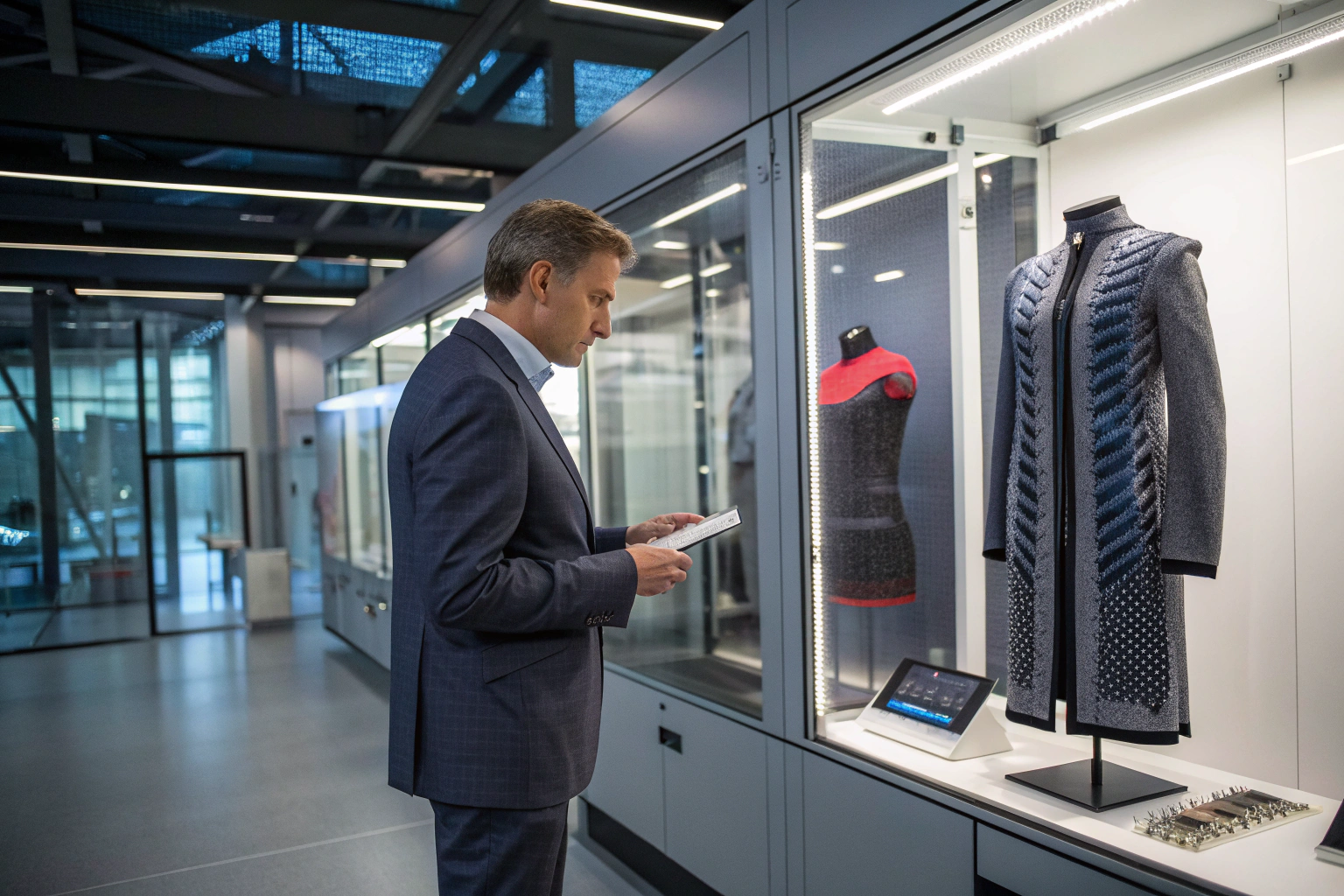In fashion and technical textiles, the demand for advanced functionality is higher than ever. Buyers no longer see garments as simple protection or decoration; they expect adaptability, responsiveness, and sustainable innovation. With over two decades of professional involvement in textile science, I have observed how programmable matter textiles have evolved from laboratory concepts into materials shaping real apparel production. These fabrics are designed to transform in structure, performance, and appearance, enabling apparel that morphs with its environment and user needs.
Programmable matter textiles represent the convergence of fiber science, material engineering, and apparel design. They integrate responsive polymers, liquid crystal elastomers, and shape-memory composites to create garments that adapt dynamically to heat, movement, or stimuli. For apparel buyers and sourcing directors, these developments signal not only technical novelty but also new business opportunities across sportswear, fashion, and protective industries.
This article presents the latest programmable matter technologies, explaining their mechanisms, applications, and implications for apparel sourcing. Each technology highlights how morphing apparel can shift from theory into scalable practice.
How Do Knit Metasurfaces Enable Adaptive Apparel?
Knitting is one of the oldest methods of textile production, yet modern research has redefined its potential. Knit metasurfaces rely on stitch geometry instead of chemical finishes, turning fabrics into morphing structures that expand, contract, or bend according to programmed patterns. This innovation is especially valuable for sustainable development, as it reduces the need for coatings and synthetic add-ons.
Knit metasurfaces transform apparel performance by embedding functionality into fabric architecture itself. Studies in Advanced Fiber Materials have demonstrated how simple adjustments in loop structures allow textiles to produce Gaussian curvature transformations, multi-mode inflations, and flat-to-3D shifts. This capability directly supports adaptive sportswear, protective uniforms, and fashion collections seeking performance aesthetics.
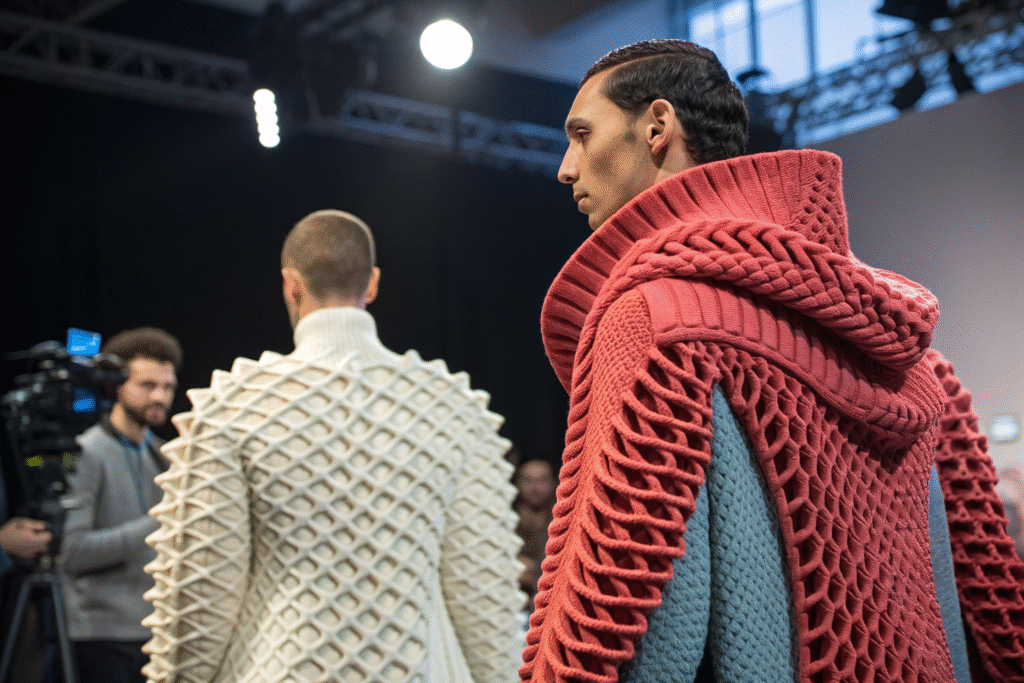
Can stitch geometry really change fabric performance?
Yes. The principle is based on the mechanics of interlooped yarns. When tension is applied, structural differences in loops produce predictable movements. For apparel manufacturing, this means controlled adjustments in fit and shape. Springer’s metasurface research provides strong evidence of scalability, while adaptive knits are being tested in commercial pilot projects.
What industries could benefit most from adaptive knit textiles?
Sportswear brands are immediate beneficiaries, as these fabrics provide ventilation and compression without chemical finishes. Medical sectors also gain value in compression garment applications. In fashion, stage wear or avant-garde pieces can use this technology to shift forms dynamically.
Are Liquid Crystal Elastomers the Future of Smart Clothing?
Liquid crystal elastomers (LCEs) combine molecular orientation with polymer elasticity, making them ideal candidates for responsive apparel. Unlike static fibers, they bend, twist, or expand under heat or light, creating garments that actively respond to the wearer or environment. With careful alignment, LCEs demonstrate predictable, repeatable morphing behavior.
LCEs bring multi-mode adaptability into textiles, making clothing responsive to both comfort and design requirements. At Harvard, engineers have developed elastomer sheets that shift into domes, fins, and saddles, inspired by biological organisms. The implication for apparel is significant: clothing can alter ventilation, adjust silhouette, or change structural support seamlessly.
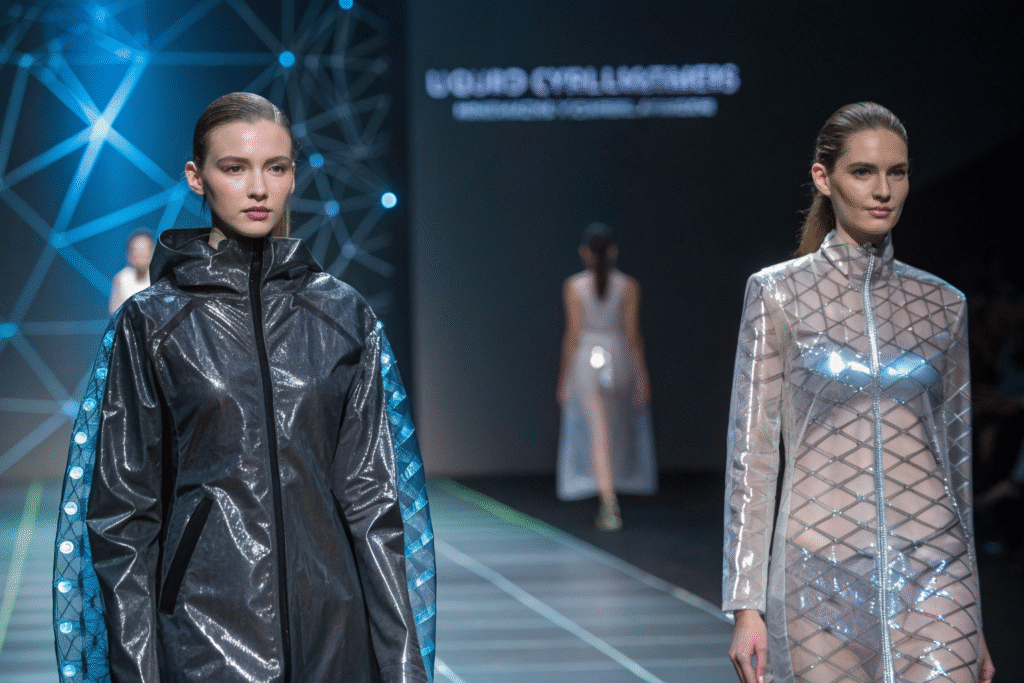
How do LCEs improve user comfort in apparel?
They can enhance thermoregulation by opening ventilation areas when warm and contracting for insulation when cold. For athletes, this means optimized body temperature during high activity. For luxury fashion, it enables expressive garments that transform based on environmental cues. Scientific analysis on thermal regulation confirms the potential benefits for human comfort.
What challenges must be solved before large-scale adoption?
Production remains the main challenge. LCEs require precision alignment that is difficult to scale industrially. However, integration into soft robotics shows that industrial adaptation is progressing. Once costs reduce, LCE integration into activewear or outerwear will become realistic.
How Does Epoxy Shape-Memory Technology Work in Apparel?
Epoxy shape-memory systems such as EpoMemory provide another pathway to morphing apparel. By adjusting crosslink densities, specific fabric zones are programmed for unique shape responses. These localized behaviors activate under controlled heating, allowing panels or garment areas to morph independently.
Epoxy-based shape-memory offers repeatable, localized morphing for fashion and technical garments. Unlike one-time transformations, these materials cycle through shape changes repeatedly, retaining mechanical integrity. In apparel, this translates to sleeves that tighten during sports, collars that extend in cold, or modular jackets that adapt to context.
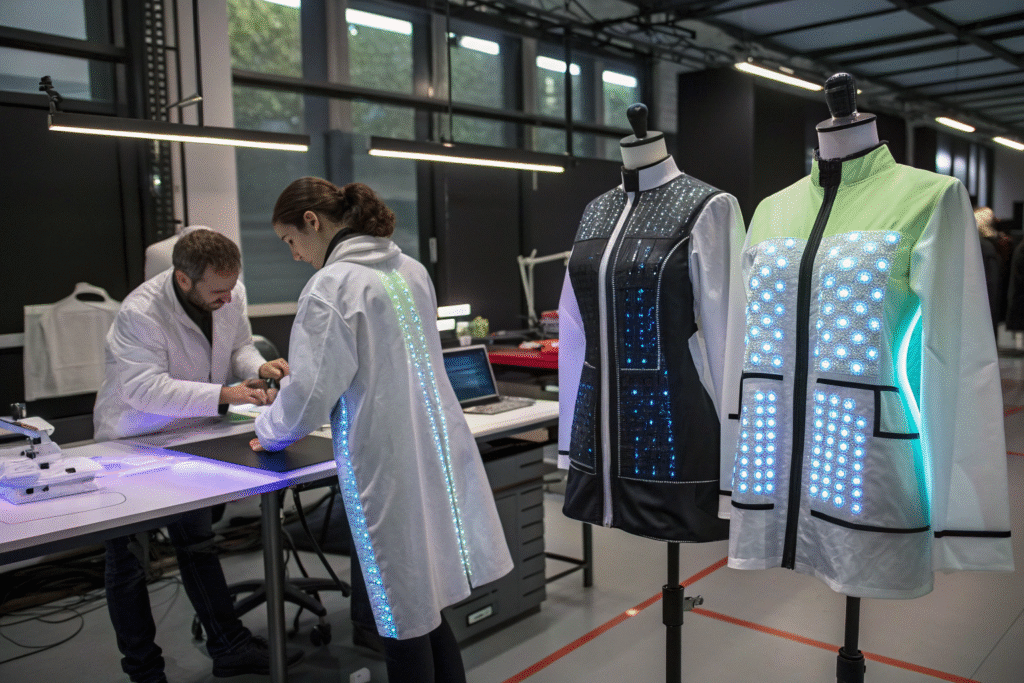
Where is epoxy shape-memory most effective in textiles?
The best applications are in structured apparel zones like cuffs, collars, or modular outerwear. Morphing Matter’s EpoMemory project provides case studies demonstrating precise morphing behaviors. For sourcing managers, this technology promises adaptive garments without overcomplicating mass production.
Can epoxy-based fabrics integrate with electronics?
Yes. Integration with conductive fibers allows connection with sensors, magnets, and heaters, opening pathways to interactive fashion. Programmable epoxy zones could respond to smartphone signals, adjusting garment features automatically. This bridges the gap between functional fashion and smart wearables.
What Role Do Smart Fibers and E-Textiles Play in Morphing Apparel?
Beyond coatings and elastomers, programmable apparel relies on advanced fibers and electronic textiles. Janus filaments, which combine active and passive fiber sides, bend in controlled ways under heat. Shape-memory alloys (SMAs) further enable contraction and expansion in woven or knitted structures. When combined with e-textiles, these fibers create garments that both morph and communicate.
Smart fibers provide morphing precision, while e-textiles offer connectivity and intelligence. Together, they enable responsive clothing that not only changes shape but also collects data or connects with devices. This makes them crucial for sportswear, health monitoring, and interactive fashion.
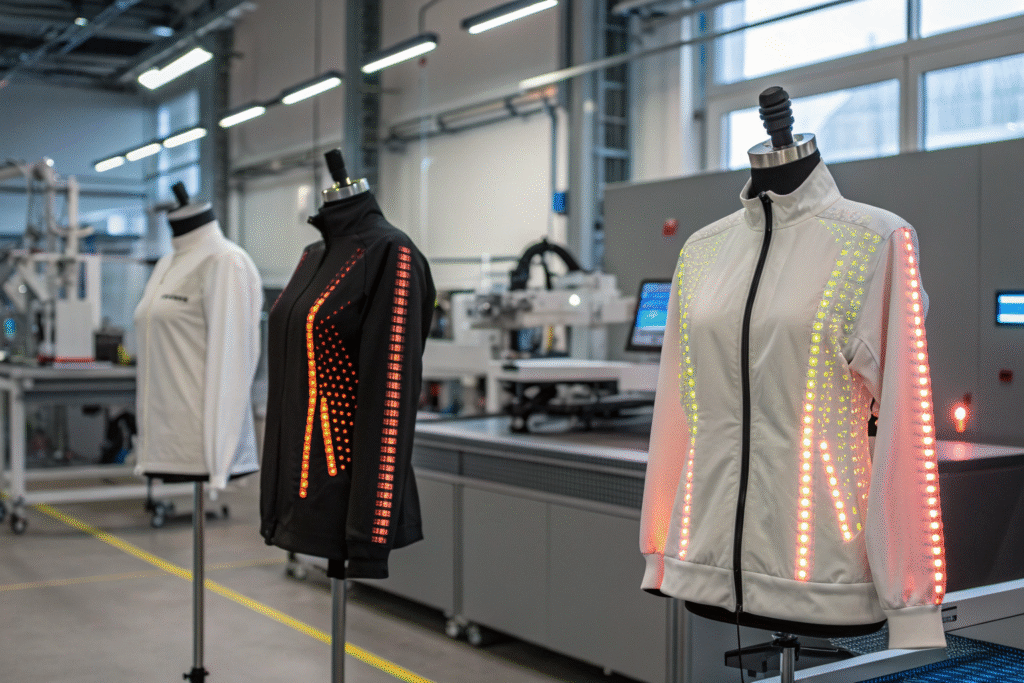
What are Janus filaments, and how are they used?
These fibers are hybrid constructions where one side expands and the other contracts. The resulting bending action allows fabrics to fold or curl predictably. Research in APS Physics confirms their utility for seams, collars, or foldable garment structures.
How do e-textiles expand the scope of morphing apparel?
Plug-n-play e-knit systems integrate actuators and sensors into garments, making textiles reconfigurable. ACM research on e-knits shows how sensors can be relocated across large knitted surfaces. This allows sportswear or medical garments to adjust in both form and digital function.
Conclusion
Programmable matter textiles are no longer just experimental concepts. From knit metasurfaces and liquid crystal elastomers to epoxy shape-memory composites and smart fibers, each development brings us closer to morphing apparel that adapts seamlessly. For buyers and brands, these materials open possibilities in adaptive fit, environmental responsiveness, and interactive design.
At Fumao Fabric, we stay at the forefront of these innovations, aligning advanced R&D with scalable production. If you are inspired to explore morphing textiles or functional fabrics for your collection, we welcome you to collaborate with us. Please contact our Business Director, Elaine, at elaine@fumaoclothing.com to begin co-developing your innovative apparel solutions.

